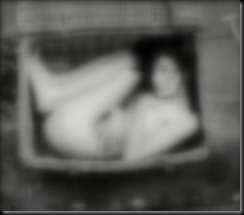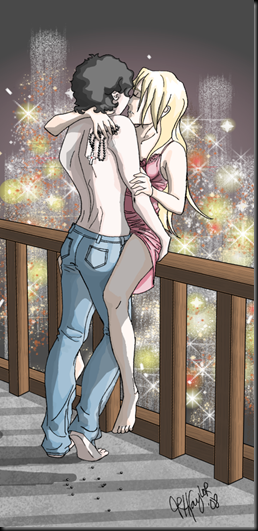
blynd-In-The-Box
A familiar nursery rhyme,
when turned clockwise
clicks away the words in my head---
am I dead? blynd-in-the-box once said.
Again in the corner, just by the bed
do you hear it? is it bleeding red?
Pressing it all in,
to cover all my sins
wanting to pop out---
can you feel it?
Turn the crank slowly,
anticipate my release.
But it never happens,
for my spring broken---
in a thousand ways,
turn, turn, make the melody burn.
Inside the box pushing
hoping release from the things I learn.
The Monkey chased the Weasel
round and round,
turn the handle, making sound---
empty the box unless I drown.
The edge of this World
finds us all, only to push the thin cover down.
Pretend with cheery color,
red, green and blue
inside is the true image---
black, black, as a heart attack.
If you tear it open
you will see it isn’t just any ole Jack---
But inside is the Devil,
hiding within paper skin,
easy to tear, easy to bear
easy to believe in this child-like nightmare.
Turn, turn, the crank some more
as each of us can, when we close the door.
Can you hold my hand just this once?
we can pull down our socks,
chase the little Devil down,
dance to it in your evening gown.
Lest we pray, for a different day
I can’t spring out, but only fade away.
“All around the Mulberry Bush,
The monkey chased the weasel.
The monkey stopped to pull up his sock,
Pop! goes the weasel.”
Origin (Jack-In-The-Box)
The first mechanical or wind-up toys were made back in Grecian times - but the art was revived by watch makers and clock makers during the 1400s. Early in the 1500s, a German clockmaker named Claus made a box for a local prince whose son was about to celebrate his fifth birthday. A simple wooden box with metal edges and a handle, and with a turn of the crank produced a simple tune and out popped a 'Jack,' a Devil, a comical version with a leering smile. Other nobles took note of the child's toy and the idea spread. Technology by the 1700s meant that it was a 'common toy' or novelty often in use for all ages. It was around this time that the image of a devil in a box became cartoon fodder for rouge politicians and other public figures held to ridicule.
Another theory as to the origin of the jack-in-the-box is that it comes from the 13th century English prelate Sir John Schorne, who is often pictured holding a boot with a devil in it. According to folklore, he once cast the devil into a boot to protect the village of North Marston in Buckinghamshire. This theory may explain why in French, a jack-in-the-box is called a "diable en boîte" (literally "boxed devil").





